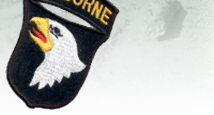Clifford Kantz, C-47 pilot
100th TCS, 441st Troop Carrier Group
We had trained long and hard. There was ground school and flight training on all the operations concerned with formation flying, day and night. We also practiced how to fly the airplane in a manner that would let the paratroopers exit the plane at the proper airspeed, configuration and time over the drop zone.
The training days were over. It was time to "separate the men from the boys" as was said before all major operations during the war.
All airplanes - C-47's- crews and paratroopers were assembled on an airfield in England to fly over Normandy on June 5, 1944. The weather put everything on hold. We were quarantined to the base. No one was allowed on or off.
The next evening we were briefed again in great detail about the part of our squadron, the 100th TCS, 441st TCG, was to play in the vertical envelopment of the German forces in Normandy.
The paratroopers of the 82nd Airborne Division were heavy with all the equipment they were going to jump with shortly after midnight the next day. We had to help them up the two steps to get into the plane because they were so heavily loaded. The 15 men we carried that night where called a "stick".
At the proper time engines were started, and we taxied very slowly in the dark to await our turn to take off. The night was very dark and cool for a morning in early June in England. There was radio silence. No one was to transmit any voice or Morse code signals at any time during the operation.
There were 18 airplanes in the 99th Troop Carrier Squadron, 27 in our squadron, the 100th, 18 in the 301st and 27 in the 302nd Troop Carrier Squadron.
After take off we climbed out, rendezvoused in formation and headed for Normandy. The only lights we could see to stay in formation were the blue formation lights on the top side of the airplane in front of us.
All procedures as to heading, altitude and airspeed were followed exactly so ast to keep all airplanes in the proper position for the paratrooper drop which was soon to follow.
As we approached the coast of Normandy we climbed to 700', the altitude for combat jumps.
Then things began to happen fast and furious. The land beneath us and the sky around us lit up like a gigantic Fourth of July. There were searchlights everywhere. We had heard that there were seven bullets between every tracer, which was not a comforting thought.
The searchlights lit up the cockpit when we were caught in them, causing our eyes to adjust to the brilliant light. When they continued past our plane, our eyes tried to adjust to the darkness, causing us to experience brief periods of vertigo, a highly dangerous situation.
We were approaching St. Mere-Eglise. All 15 paratroopers were drifting rapidly downward.
Even at this speed I could see their eyes, and they were terrified for a few brief moments as much as I was. Suppose they hit the wing and their shroud lines snagged. Or worse yet, suppose they hit the engines! All would be lost, airplane, crew members and possibly all the paratroopers who would be on board.
I screamed at the top of my voice, "Green light, green light, get 'em out!" As they exited the plane I could hear the "whoosh-whoosh" of each paratrooper. At the same time power was added to the engines and I pulled back on the controls to gain altitude so as not to be underneath any other planes and paratroopers who might be above us.
We continued across the Normandy peninsula dropping down to sea level to avoid any more search lights or anti-aircraft fire.
As we approached our airfield, we had to circle to let damaged planes or those carrying wounded land first. When all planes that had fired red flares, indicating an emergency, landed we also landed.
We went immediately to the operations building and gave an account of what happened during the flight.
The invasion of Europe had begun. The flight from England to Normandy to England had lasted only 3 hours, 45 minutes. Strangely, it seemed much longer and much shorter, but my first combat mission was over.
It must be added here that before leaving the United States for England, my grandfather gave me a verse of Scripture. It was written in pencil, on a small bit of paper. It was Psalm 91:7 "A thousand shall fall at thy side, and ten thousand at thy right hand; but it shall not come nigh thee."
After reading it, I smiled, thanked him, folded it, and put it in my left shirt pocket. I thought about it many times and wondered about it. But it was true. I went all through the war without even a scratch, even though our airplane had been riddled with anti-aircraft shrapnel many times. I carried that verse every day of the war.
Dawn was breaking over the white cliffs of Dover. We didn't realize how tired we were from our first day of combat. Many of my friends never returned that day. It was time to get some rest for the days and months that were yet to come.
It was as Winston Churchill said "The beginning of the end."
I shall never forget the small part that I played in the greatest military operation of any war in history. There are many good memories, many bad memories. But we were young, and tomorrow was another day.
Read more about the war memories of Clifford Kantz
© normandy44
<< BACK HOME
|
